From left to right: 325 hours. The fasteners. by Julia San Roman and Stronger Together. by Bronle Crosby
Oceanside Museum of Art (OMA), located in the surfing community of Oceanside, CA, attracts artists and visitors of all ages, from every walk of life and a variety of cultural backgrounds. First opening its doors in 1997, the Irving J. Gill-designed wing was built in 1926, is a National Historic Landmark building, and was formerly Oceanside City Hall. In 2008, the museum added an Orchid Award-winning central pavilion by Modernist architect Frederick Fisher and offers a sleek, contemporary setting for the museum's myriad of exhibitions and programs.
While the spaces are all impressive, the aging lighting system simply could not do proper justice to their fifteen critically acclaimed contemporary art exhibitions each year. It was time for this local cultural institution to shine even more brightly with a state-of-the-art lighting system.
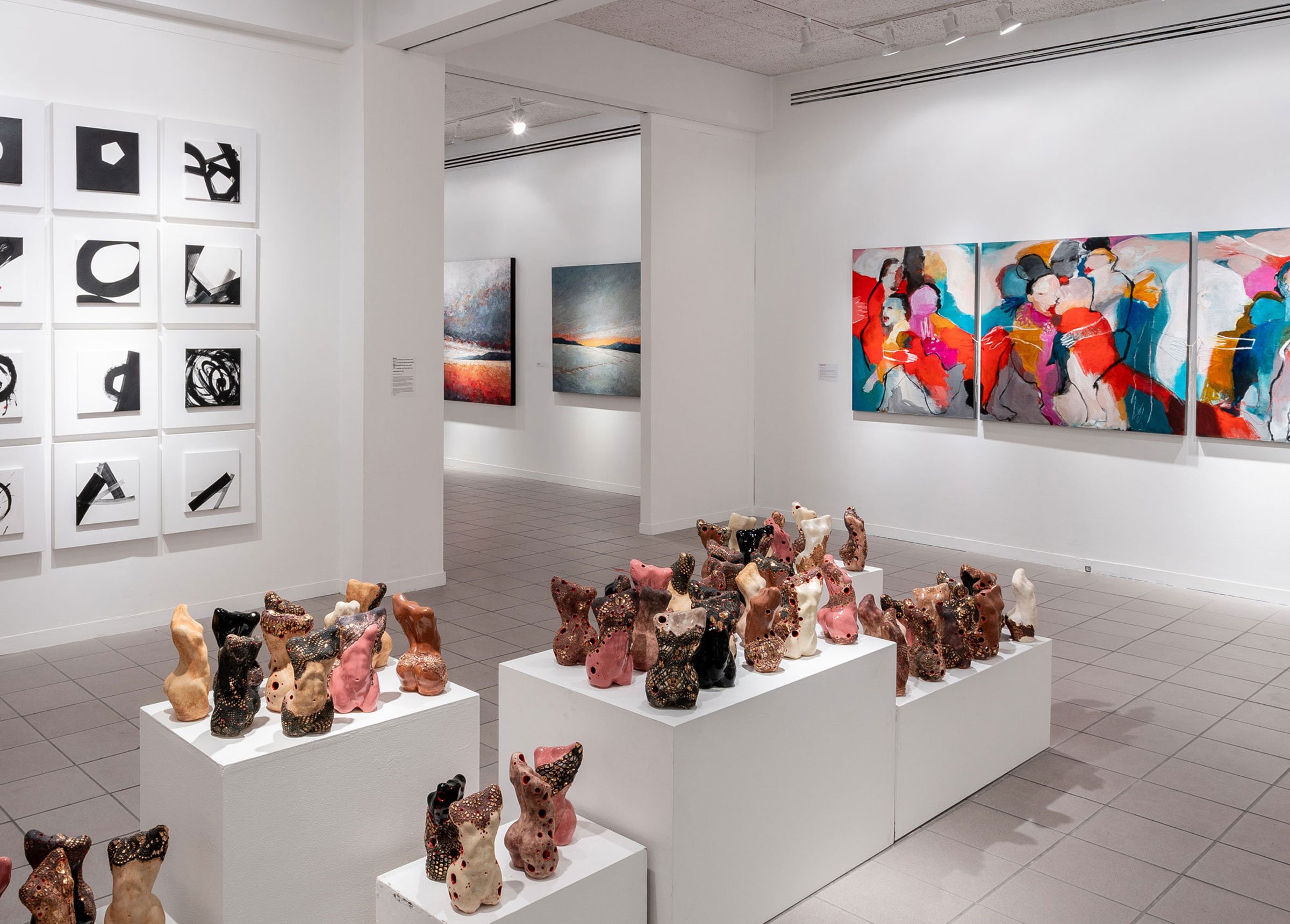
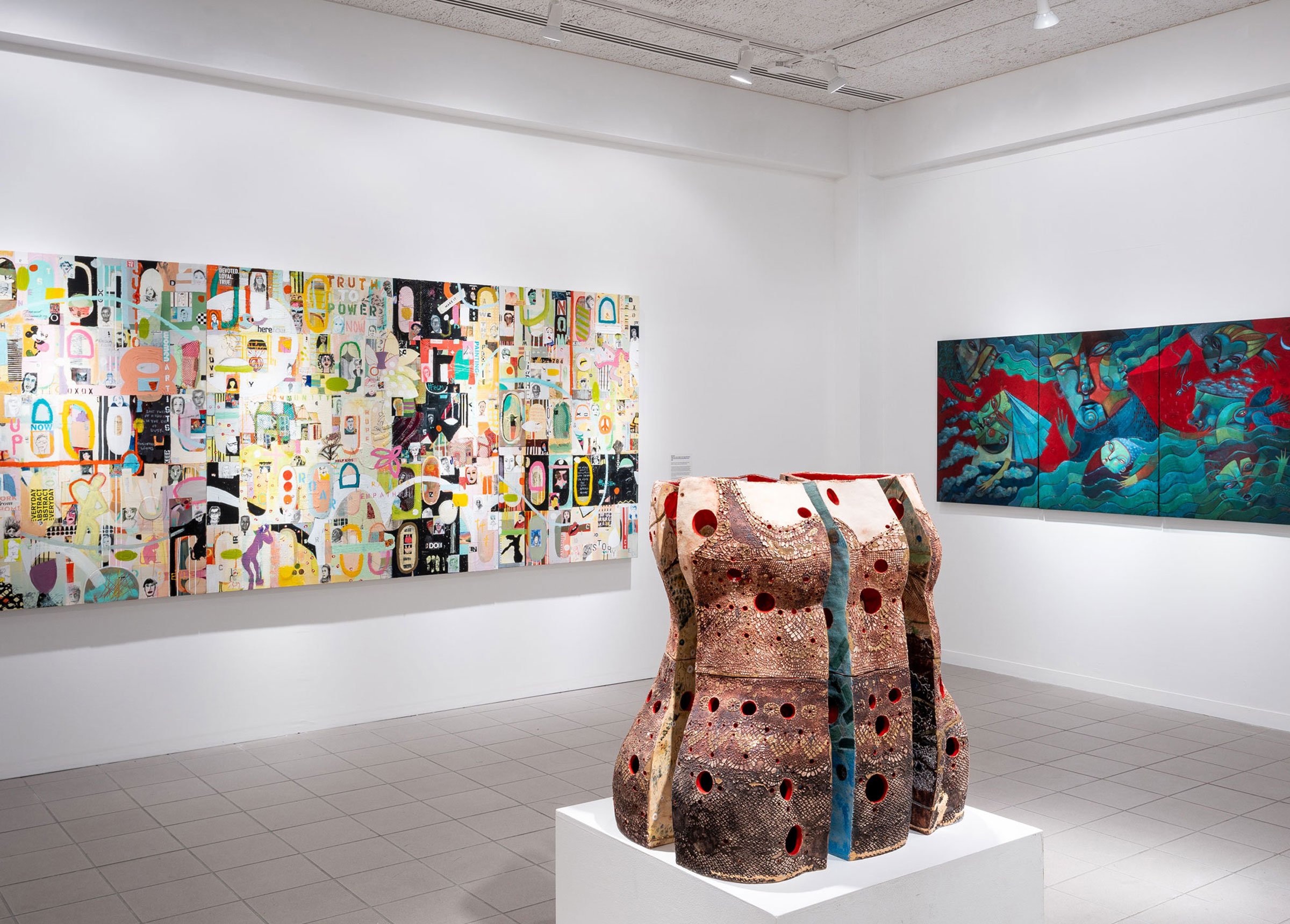
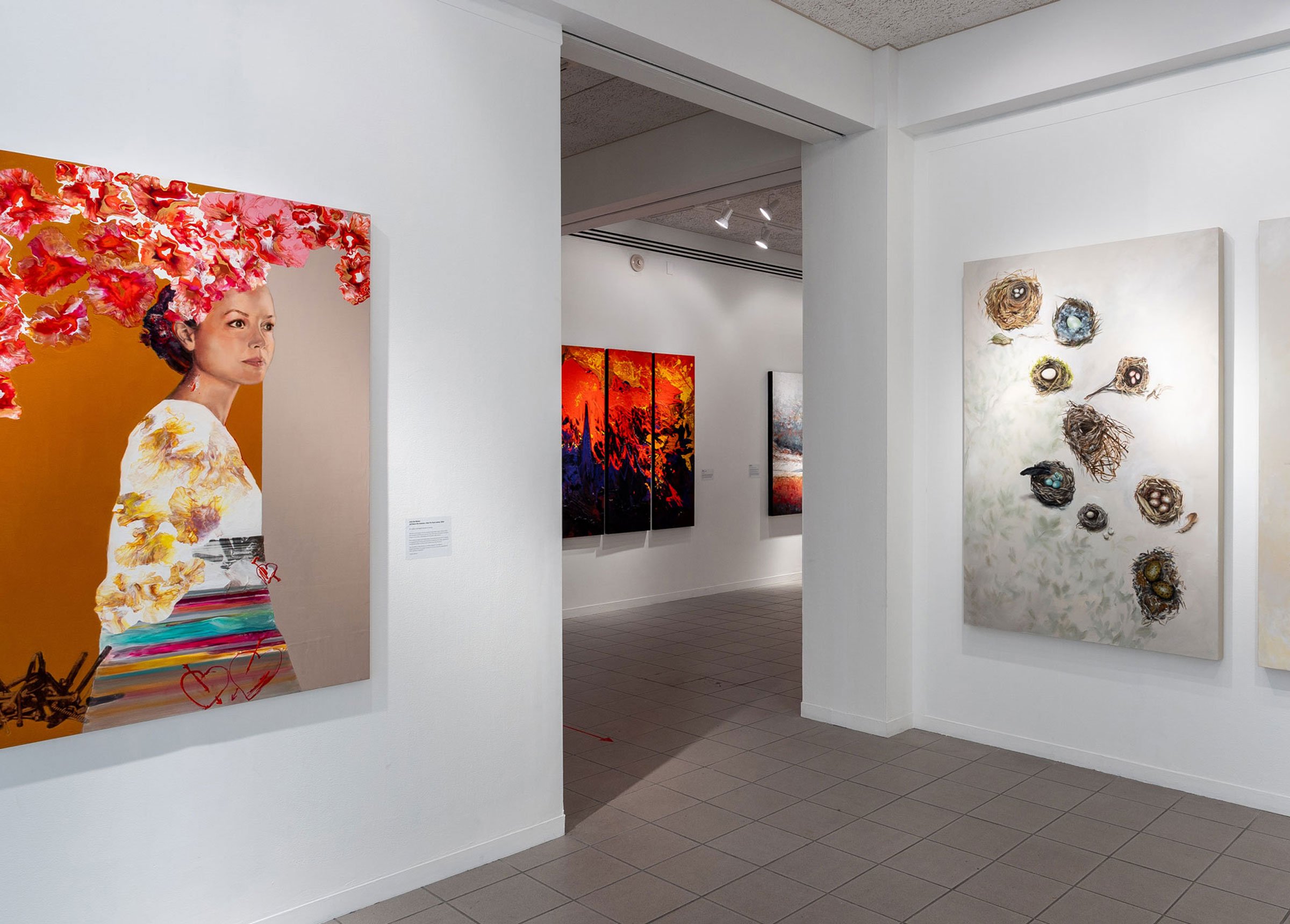
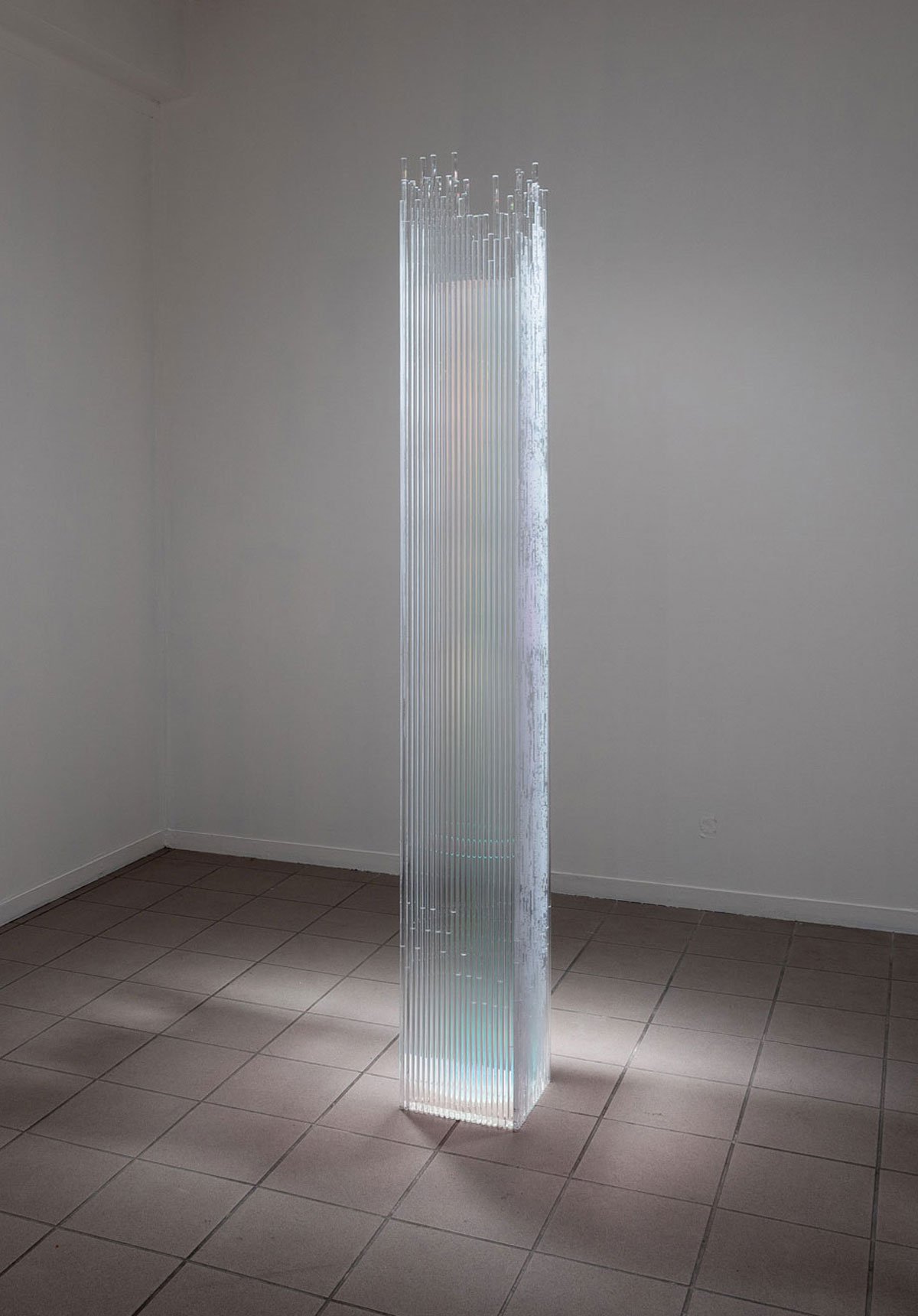
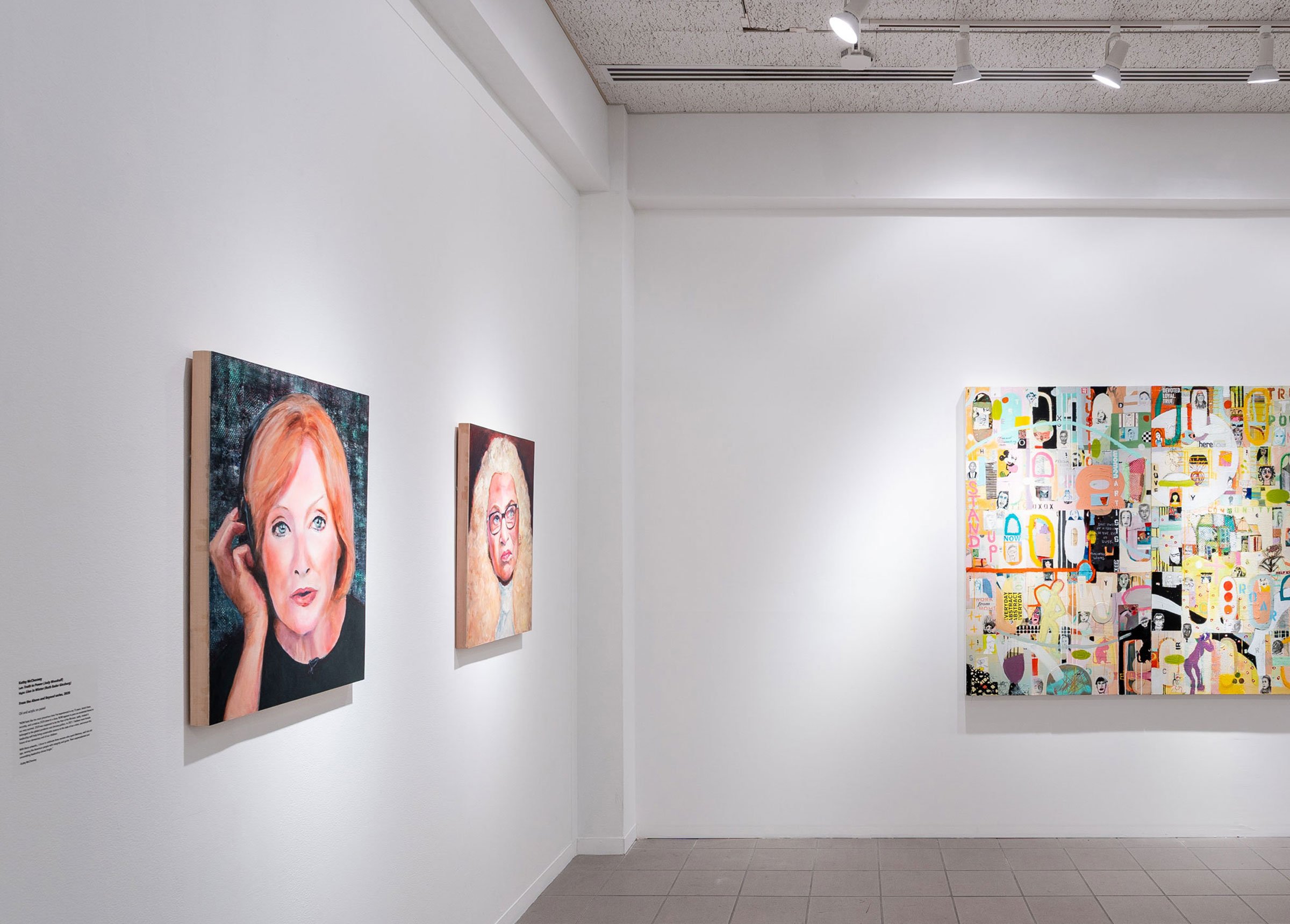
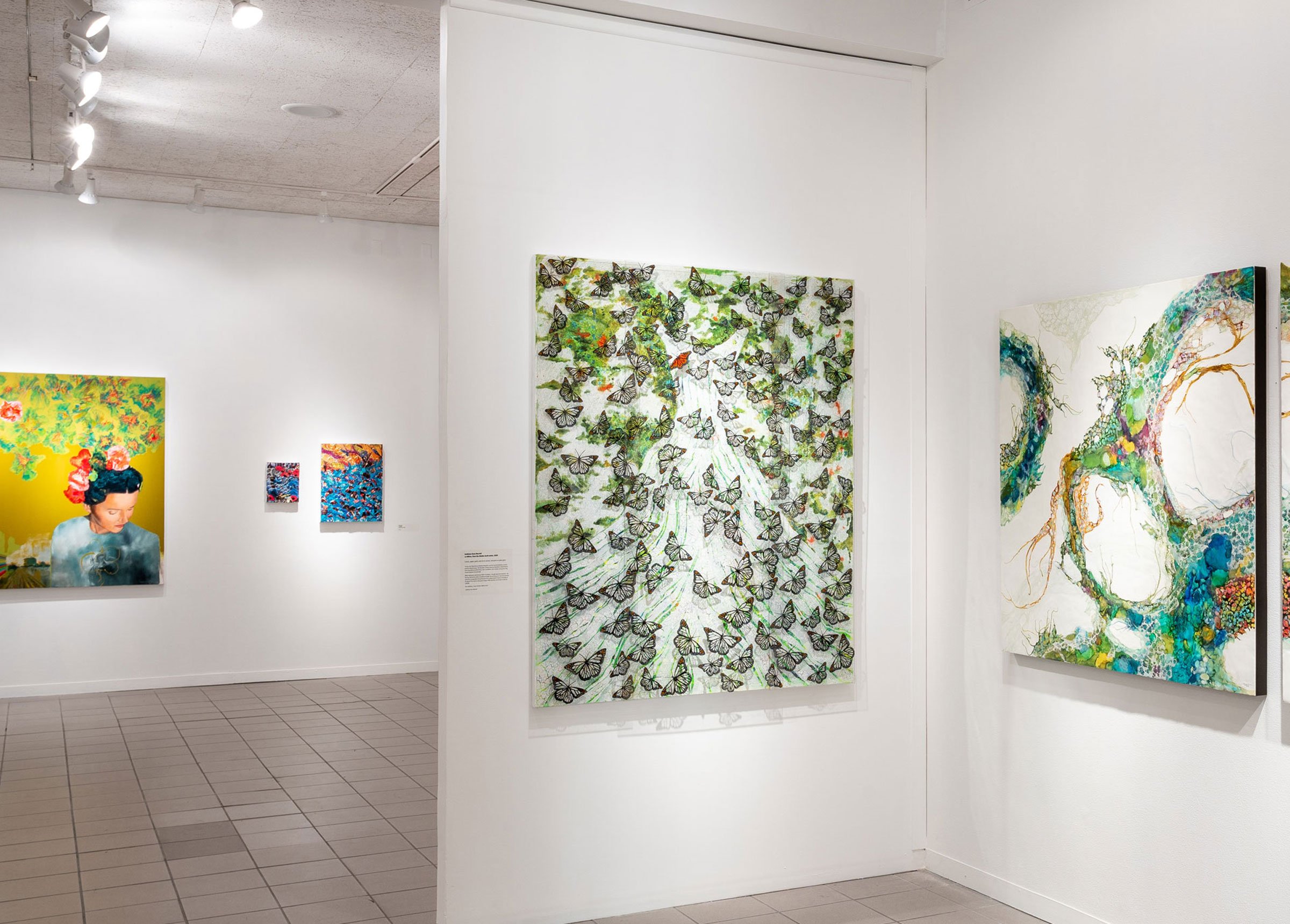
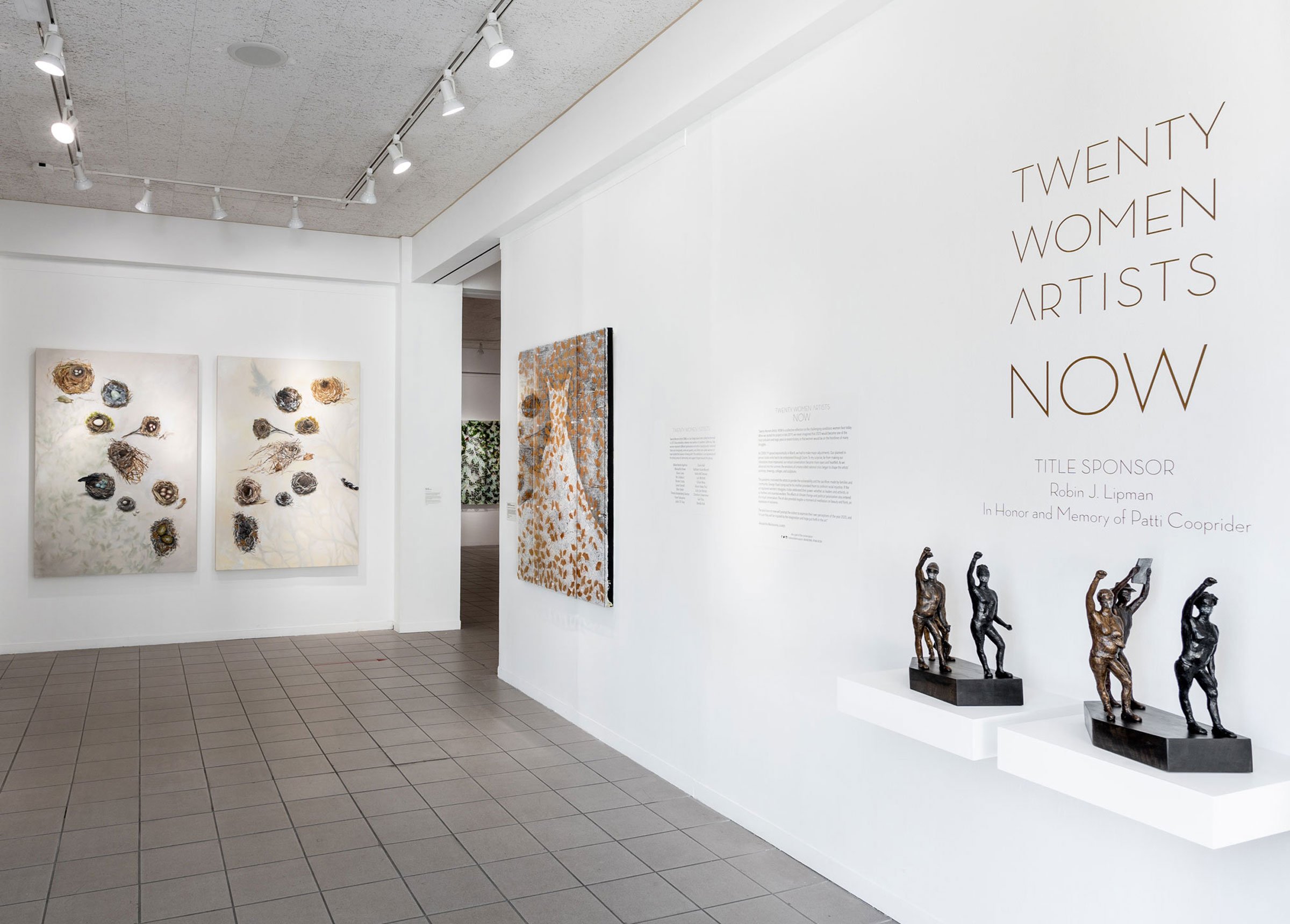
Exhibition pictured above: Twenty Women Artists: NOW curated by Alessandra Moctezuma. Project photography courtesy of OMA.
While the 2008 expansion added a stunning lobby, large outdoor terrace, major galleries and additional collections storage, the museum’s aging lighting system in the original Gill-designed galleries dated back to the mid 1990s. The 30 year old, nearly obsolete track heads dotted the ceiling and were strung together with thousands of feet of copper wire. There was also no way to dim the light except by placing metal screens on the cans. The existing 12-volt halogen bulbs had higher operating costs than LEDs and were nowhere near powerful enough to properly light the museum’s masterworks. However, like many regional cultural institutions, the budget for any upgrades was extremely tight.

"It’s incredibly rare for me to walk into a job and not need to fix anything. With Ketra, I came in and could immediately start programming. From first turn on— this is what light should be."
- Chris Stout, Lead Programmer, Western Lighting and Energy ControlsA philanthropic collaboration between local engineering, design and installation firm, ProCal, and a generous individual donor and friend of OMA, Knox Williams, was the perfect solution to the museum’s budget concerns. Inspired by a tour they were given, ProCal—strong believers in the value of public art for the health and beauty of a community—chose to donate the entire project, with Mr. Williams contributing the initial seed money.
Ketra’s S38 track lights were chosen to replace the previous MR16 track lights, and arranged using a rectangular track system. To make it easy to use every feature of Ketra's tunable lighting to its full advantage, ProCal also included a Lutron control system. The level of flexibility provided by this combination of technologies makes it possible to implement a nearly endless variety of custom lighting scenes throughout the space, which can be changed and rearranged as new displays and collections are installed.
After consultation with museum staff, the display areas were grouped into north, south, east and west tracks. Each lamp was then individually numbered for additional clarity. While the initial programming was completed by the project’s lead programmer, Chris Stout, training on how to use the system was also conducted for several members of the museum staff.

"It’s the last-minute details that can really make or break a show—and with the Ketra and Lutron systems, it’s so much easier now to get those details right."
- Drei Kiel, Lead Preparator and Facilities Manager, Oceanside Museum of Art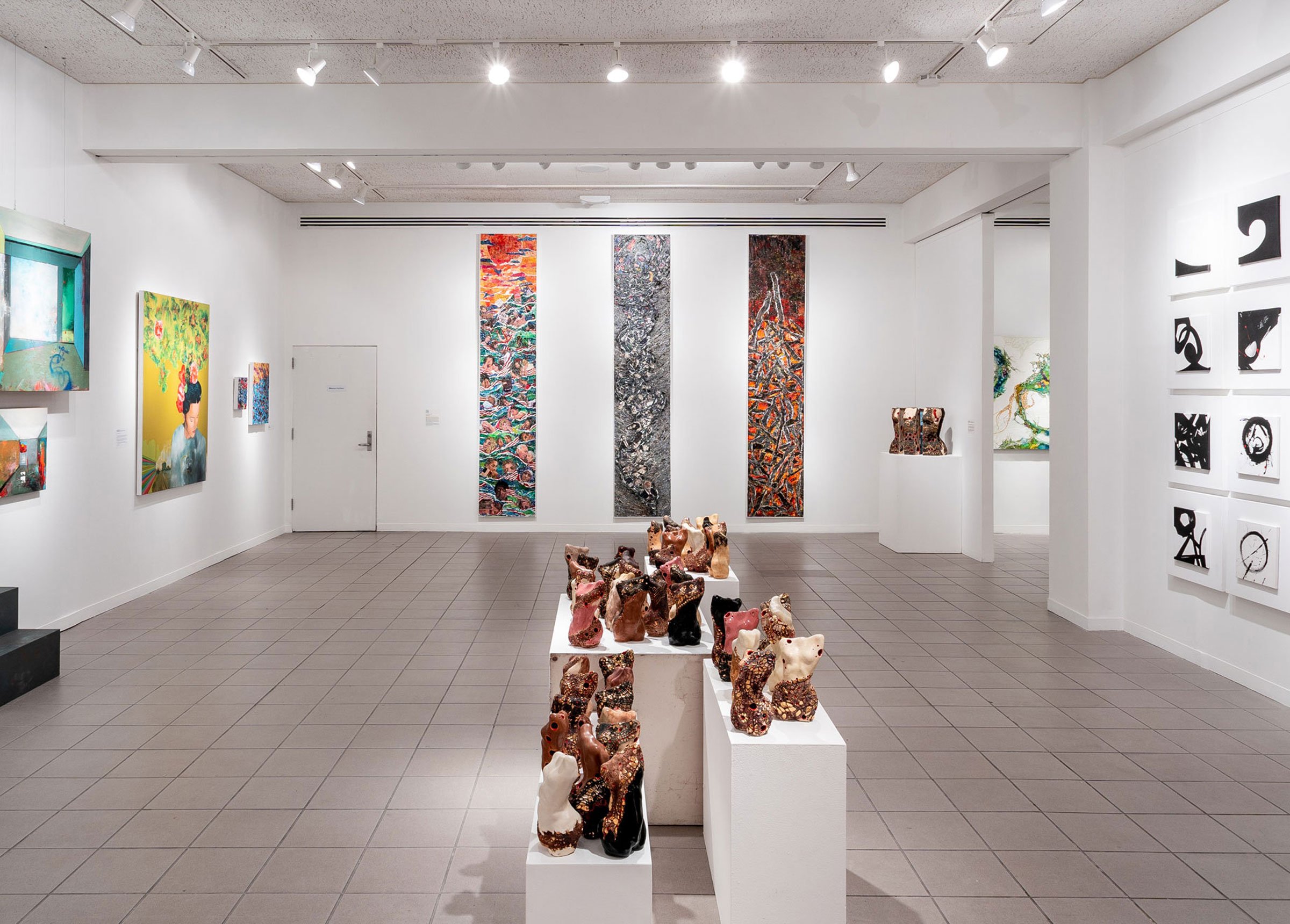
Project photography courtesy of OMA. For a full list of artists, please visit the Twenty Women Artists: NOW exhibit page.
The upgraded lighting released a flood of complimentary feedback from staff, board members, guest artists and museum visitors alike. Not only do the artworks’ colors pop, but the new lighting has subtly transformed the entire space. Dimming can now be accomplished with the tap of an iPad, and every individual light’s color temperature and intensity can be adjusted just as easily. From works by renowned international artists to local rising stars, every piece on display is showcased at its very best— and as the museum plans the acquisition of additional space, they hope to include Ketra and Lutron lighting in those galleries as well. Finally, the high quality of the displays enables OMA to remain true to its vision of being a sustainable gathering place to celebrate the inspiring and transformative power of art.
Oceanside Museum of Art is open Thursday-Sunday, and visitor information is available here. Even if you’re not in the SoCal area, you can connect with the museum from home any time via a variety of virtual events.
24/7 Technical Support:
1-844-LUTRON1 (588-7661)
lightingsupport@lutron.com
Customer Service:
Monday-Friday 8am- 5pm EST
1-844-LUTRON1 (588-7661)
The Ketra logo, Ketra, TruBeam, Color Lock, and Calibration360 are trademarks or registered trademarks of Lutron Electronics Co., Inc. in the US and/or other countries.
©2024 Lutron Electronics Co., Inc. All rights reserved.
Get inspired with all the best from Lutron and Ketra: exclusive news, project features, and more.